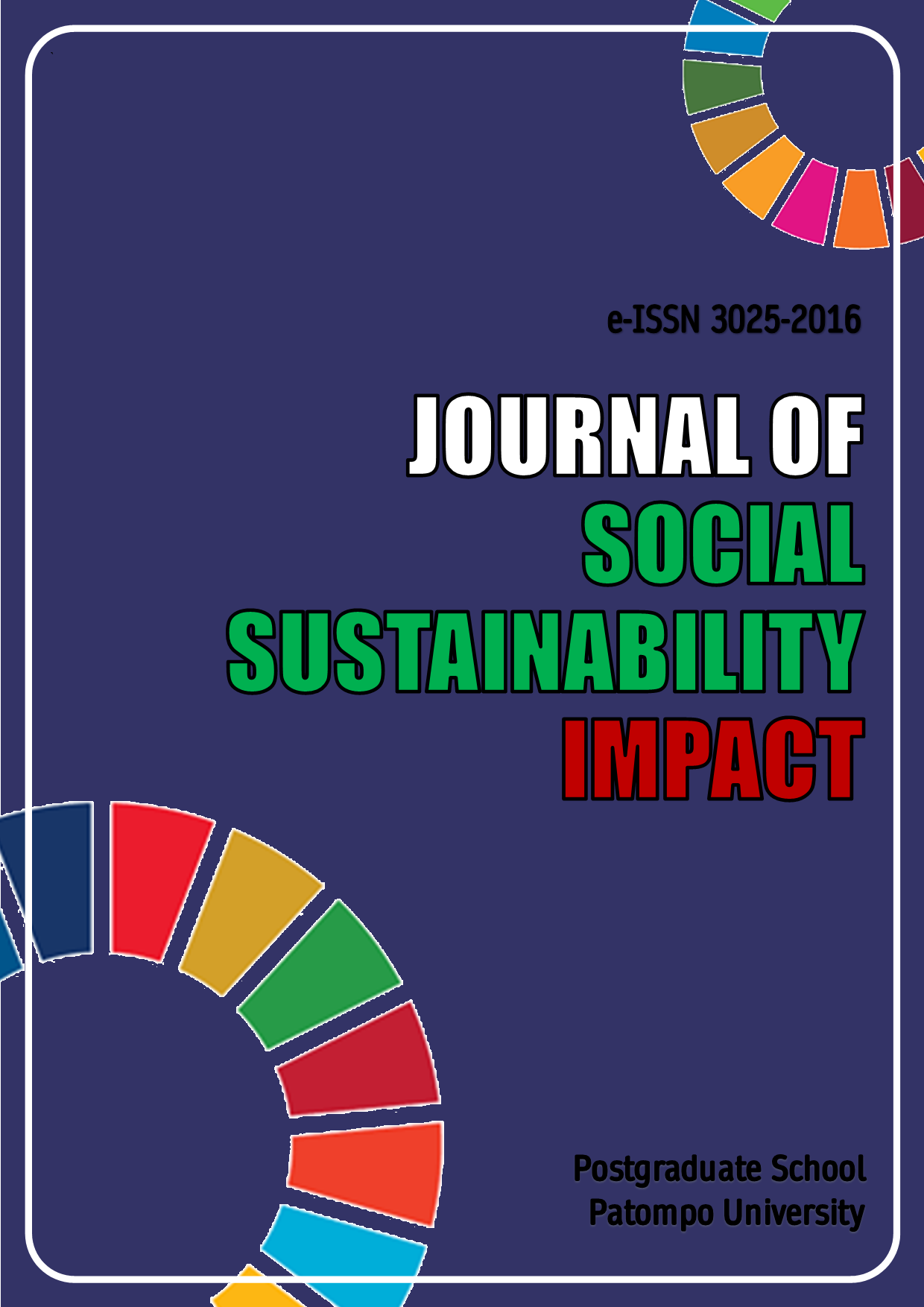Unlocking Success: Maximizing the Impact of Social Media as a Strategic Tool for Online Business Marketing
Keywords:
social media, business, online, economic growthAbstract
This study aims to determine the role of social media in online business marketing efforts, assess the influence of platforms such as WhatsApp, Facebook, and Instagram on online business marketing in the region, and understand how social media marketing can increase community income. This field research employs a qualitative approach, with informants consisting of online business owners and online shop customers. Data collection techniques encompassed in-depth interviews, participatory observation, and comprehensive documentation. In-depth interviews provided detailed insights from online business owners and customers about their experiences with social media marketing. Participatory observation offered a firsthand understanding of the online business environment, while comprehensive documentation systematically recorded all relevant information. Data analysis involves systematic data reduction to focus on crucial information, detailed data display to identify patterns and trends, and formulating conclusions based on the analyzed data. This process provided a comprehensive understanding of the role and impact of social media on online business marketing and community income. The results indicate that social media is crucial in online business marketing efforts. It significantly contributes to brand awareness, promotions, online storefronts, and sales to end consumers. The platforms used are Facebook, Instagram, and WhatsApp, with Facebook being the most widely used. The study found that social media usage significantly influences sales levels, increasing income for the local community. These findings highlight the importance of social media as an effective tool for online business marketing, driving economic growth and community development.
References
Arora, P. (2019). The next billion users: Digital life beyond the West. Harvard University Press.
Azıonya, C. M., & Nhedzı, A. (2021). The digital divide and higher education challenge with emergency online learning: Analysis of tweets in the wake of the COVID-19 lockdown. Turkish Online Journal of Distance Education, 22(4), 164–182.
Bellawati, N., & Tahapary, H. (2022). Pergeseran Fungsi Media Sosial Instagram Menjadi Opsi Bisnis Online. Prosiding Jurnalistik, 8(1), 253–259.
Berthon, P. R., Pitt, L. F., Plangger, K., & Shapiro, D. (2012). Marketing meets Web 2.0, social media, and creative consumers: Implications for international marketing strategy. Business Horizons, 55(3), 261–271.
Chaney, P. (2009). The digital handshake: seven proven strategies to grow your business using social media. John Wiley & Sons.
Chugh, R., & Joshi, M. (2020). Challenges of knowledge management amidst rapidly evolving tools of social media. In Information diffusion management and knowledge sharing: Breakthroughs in Research and practice (pp. 745–760). IGI Global.
Funk, T. (2014). Advanced social media marketing: How to lead, launch, and manage a successful social media program. Apress.
Gamble, T. K., & Gamble, M. (2005). Communication works. McGraw-Hill.
Greve, A., & Salaff, J. W. (2003). Social networks and entrepreneurship. Entrepreneurship Theory and Practice, 28(1), 1–22.
Hammond, M., & Wellington, J. (2020). Research methods: The key concepts. Routledge.
Hensel, K., & Deis, M. H. (2010). Using social media to increase advertising and improve marketing. The Entrepreneurial Executive, 15, 87.
Kırcova, İ., Yaman, Y., & Köse, Ş. G. (2021). Instagram, Facebook or Twitter: which engages best? A comparative study of consumer brand engagement and social commerce purchase intention.
Krippendorff, K. (2018). Content analysis: An introduction to its methodology. Sage publications.
Largan, C., & Morris, T. (2019). Qualitative secondary research: A step-by-step guide. Sage.
Leeflang, P. S. H., Verhoef, P. C., Dahlström, P., & Freundt, T. (2014). Challenges and solutions for marketing in a digital era. European Management Journal, 32(1), 1–12.
Merchant, G. (2012). Unravelling the social network: theory and research. Learning, Media and Technology, 37(1), 4–19.
Miles, M. B., Huberman, A. M., & Saldana, J. (2013). Qualitative data analysis. SAGE Publications Sage CA: Los Angeles, CA.
Nasrullah, R. (2018). Riset khalayak digital: Perspektif khalayak media dan realitas virtual di media sosial.
Neuman, W. L., & Robson, K. (2014). Basics of social research. Pearson Canada Toronto.
Ray, R. (2013). The Facebook guide to small business marketing. John Wiley & Sons.
Rey, P. J. (2012). Alienation, exploitation, and social media. American Behavioral Scientist, 56(4), 399–420.
Ringold, D. J., & Weitz, B. (2007). The American Marketing Association definition of marketing: Moving from lagging to leading indicator. Journal of Public Policy & Marketing, 26(2), 251–260.
Scott, D. M. (2009). The new rules of marketing and PR: how to use social media, blogs, news releases, online video, and viral marketing to reach buyers directly. John Wiley & Sons.
Trusov, M., Bucklin, R. E., & Pauwels, K. (2009). Effects of word-of-mouth versus traditional marketing: findings from an internet social networking site. Journal of Marketing, 73(5), 90–102.
Vuori, M. (2012). Exploring uses of social media in a global corporation. Journal of Systems and Information Technology, 14(2), 155–170.
Downloads
Published
How to Cite
Issue
Section
License

This work is licensed under a Creative Commons Attribution-ShareAlike 4.0 International License.




